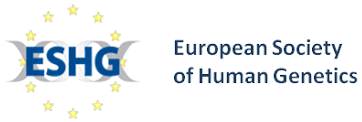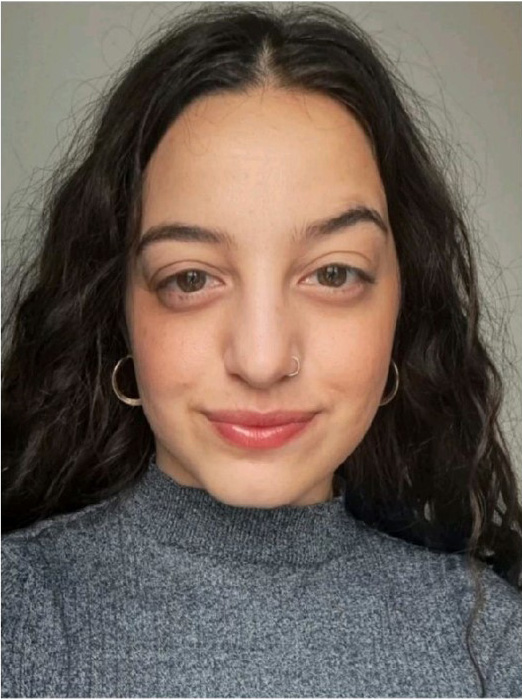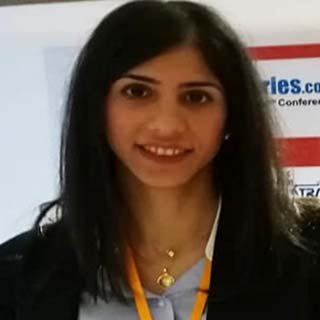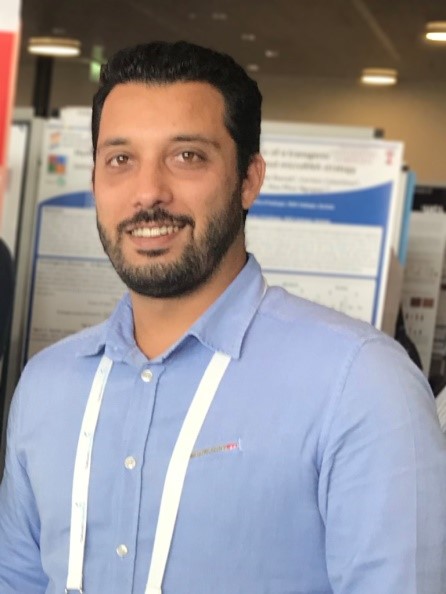Ειδοποίηση
Το περιεχόμενο παρέχεται μέσω αυτόματης μετάφρασης.

The ESHG announces its annual conference fellowships here and offers fellowships to Early Career Investigators (ECIs), with no more than 4 years postdoctoral work experience) via the National Human Genetics Societies of Europe. The CSHG is one of those societies and is thus in a position to select one of its ECI members for a fellowship to attend the annual ESHG event.
The Cypriot fellowship is offered by the CSHG in line with the ESHG rules pointed out below. In addition to the €600.- fellowship offered by the ESHG, the CSHG provides up to an additional €400.- to the successful candidate, in order to allow coverage of proven additional expenses for travel and accommodation. This should allow young scientists to attend the annual ESHG conference, even if no independent funding is available.
Submission deadline for applications of CSHG candidates is 10th February 2023. The successful candidate was announced on 18th March 2023 at our 9th International Conference, ahead of the ESHG early-bird registration deadline of 20th April.
The ESHG criteria are as follows:
The national society will select one fellowship holder, which should comply with the following criteria:
Specifically for the CSHG selection, the following applies additionally :
To this end, indication of 2022/2023 publications, presentations, awards, invited lectures, research grants and teaching activities will be helpful.
We look forward to learning more about our early-career CSHG members and to your application by e-mail here, which should include:

– She/he should have ≤ 4 years of postdoctoral work experience.
– She/he cannot receive more than one fellowship in consecutive years.

– Free registration (incl. social events & lunches) – Accommodation & Travel support from ESHG ≤ €600.- – Additional support from the CSHG for remaining associated expenses ≤ €400.-

| Photograph |  |
| Name and Title |
Denise O'Mahony, PhD |
| Affiliation |
The Cyprus Institute of Neurology & Genetics |
| Abstract Title | Large scale case-control analyses of rare variant data; application to BRCA1 and BRCA2 |
| Photograph |  |
| Name and Title |
Ouranio Anastasiou, PhD |
| Affiliation |
Karaiskakio Foundation Cyprus |
| Abstract Title | The rare case of a patient with neurodevelopmental disorder with epilepsy |
| Photograph |  |
| Name and Title |
Paraskevi Chairta, PhD |
| Affiliation |
The Cyprus Institute of Neurology and Genetics |
| Abstract Title |
Prediction of Parkinson’s disease risk based on genetic profile and established risk factors |
| Photograph |  |
| Name and Title |
Maria Zanti, MSc |
| Affiliation |
The Cyprus Institute of Neurology and Genetics |
| Abstract Title |
A comprehensive in silico analysis of the functional, structural and stability impact of the PALB2 p.Leu1143His variant of uncertain clinical significance. |
| Photograph |  |
| Name and Title | Petros Patsali, PhD |
| Affiliation |
The Cyprus Institute of Neurology & Genetics |
| Abstract Title | Safe and efficient personalised TALEN- and CRISPR/Cas9-based gene correction therapy for β-thalassaemia by non-viral delivery to primary cells |
| Photograph |  |
| Name and Title | Constantia Aristidou, PhD |
| Affiliation | The Cyprus School of Molecular Medicine |
| Abstract Title | Patient-specific variants identified by whole-exome sequencing underlie discordant phenotypes in familial apparently balanced translocations |
| Photograph |  |
| Name and Title | Petros Patsali, MSc |
| Other Distinction | ESHG YOUNG INVESTIGATOR AWARD CANDIDATE 2017 Selected oral presentation |
| Affiliation | King’s College London & The Cyprus Institute of Neurology and Genetics – Department of Molecular Genetics Thalassaemia |
| Abstract Title | Less means more: knockdown of aberrant HBBIVSI-110(G>A) mRNA restores HBB expression and enhances gene therapy by gene addition in primary erythroid cells |
| Authors and Affiliations | Petros Patsali, MSc1,2,*, Panayiota Papasavva, PhD1,3, Coralea Stephanou, MSc1,2,Soteroulla Christou, MD4, Maria Sitarou, MD4, Michael N Antoniou, PhD2, Carsten W Lederer, PhD1,3and Marina Kleanthous, PhD1,3
1Molecular Genetics of Thalassemia Department, The Cyprus Institute of Neurology and Genetics, Nicosia, Cyprus, 2370; 2Department of Medical and Molecular Genetics, King’s College London, London, United Kingdom, SE1 9RT; 3Cyprus School of Molecular Medicine, 1683 Nicosia, Cyprus; 4Thalassaemia Centre, Ministry of Health, Cyprus; * Presenting Author (PetrosPa@cing.ac.cy) |
| Abstract | Mutations reducing β-globin production and thus causing β-thalassemia are of global clinical importance. β-Thalassemia caused by the HBBIVSI-110(G>A) mutation (HGVS name: HBB:c.93-21G>A), which produces an abnormal splice acceptor site, is particularly frequent in many Western countries and causes severe thalassemia major in homozygotes. Preclinical and clinical studies have highlighted patients with HBBIVSI-110(G>A) as difficult to treat with gene therapy by gene addition, suggesting an effect of the mutant locus on normal, endogenous or vector-encoded, β-globin alleles. Towards improved gene-addition treatment of affected patients and supposing that the mutant locus acts in trans by aberrant HBBIVSI-110(G>A)-derived mRNA, we therefore set out to reduce the latter by RNA interference. We recognised, first in a novel humanised murine erythroleukemia model and then in primary CD34+-derived erythroid cells from HBBIVSI-110(G>A)-homozygous patients, that specific knock-down of the aberrant HBBIIVSI-110(G>A) mRNA alone results in extremely significant induction of β-globin production from the mutant locus. In primary cells the resulting β-globin expression and phenotypic correction of erythroid-lineage differentiation is equal to or exceeds that achieved by same-sample control treatment with the clinically successful GLOBE gene-therapy vector. Furthermore, combination of HBBIVSI-110(G>A) knockdown with GLOBE results in significant improvement of both disease parameters compared to either treatment alone. This study establishes aberrant HBBIVSI-110(G>A) mRNA as the main causative agent of disease severity in HBBIVSI-110(G>A) thalassaemia and as a potent target for mutation-specific gene therapy for β-thalassaemia. It moreover puts forward HBBIVSI-110(G>A) thalassaemia as a paradigm for the importance of allelic heterogeneity when applying gene therapy by gene addition. |
| Photograph |  |
| Name and Title | Maria Loizidou, PhD |
| Affiliation | The Cyprus Institute of Neurology and Genetics – Department of Electron Microscopy and Molecular Pathology |
| Abstract Title | <no abstract submitted> |
| Authors and Affiliations | <no abstract submitted> |
| Abstract | <no abstract submitted> |
| Photograph |  |
| Name and Title | Petros Patsali, MSc |
| Affiliation | King’s College London & The Cyprus Institute of Neurology and Genetics – Department of Molecular Genetics Thalassaemia |
| Abstract Title | Towards gene correction of IVS1-110 β-thalassaemia |
| Authors and Affiliations | Petros Patsali, MSc1,2, Claudio Mussolino, PhD3, Coralea Stephanou, MSc1,2, Michael N Antoniou, PhD2, Toni Cathomen, PhD3, Carsten W Lederer, PhD1,* and Marina Kleanthous, PhD1
1Molecular Genetics of Thalassemia Department, The Cyprus Institute of Neurology and Genetics, Nicosia, Cyprus, 2370; 2Department of Medical and Molecular Genetics, King’s College London, London, United Kingdom, SE1 9RT; 3Institute for Cell and Gene Therapy, University Medical Center Freiburg, Freiburg, Germany, 79106; * Presenting Author (PetrosPa@cing.ac.cy) |
| Abstract | Thalassemia is amongst the commonest single-gene disorders worldwide and caused by deficient production of α- or β-globin. The disease has limited curative treatment options, but as a monogenic disorder of the hematopoietic system is ostensibly an ideal target for gene therapy. Specific β-thalassemia mutations have already been addressed by the burgeoning field of genome editing, targeting mutations of minor prevalence in the West and combining homology-mediated gene repair with the expansion of corrected iPS cell clones Our research is focused on the development of efficient gene-correction tools (TALENs and CRISPR-Cas9) specific for the common and severe HBBIVS1-110 (G>A) mutation, which in most Mediterranean and many Western countries has a frequency of above 20% (with 80% on the island of Cyprus) amongst β-thalassemia carriers. This mutation introduces an abnormal splice acceptor site in intron 1 of the β-globin gene, therefore retaining an intronic in-frame premature stop codon in the mature, aberrantly spliced mRNA. In this study, we illustrate the high cleavage activity of novel IVS1-110-specific genome-editing tools (TALENs and CRISPR-Cas9) in HEK293T cells and in HBBIVS1-110-transgenic murine erythroleukemia cells. Towards the assessment of therapeutic efficiency of our designer nucleasese at the mRNA level, we have validated a multiplex RT-qPCR method for the absolute quantification of the correctly and aberrantly spliced HBB mRNAs. Finally, immunoblots indicate the partial correction of β-globin protein expression in treated HBBIVS1-110-transgenic MEL cells compared to mock controls. These preliminary data indicate HBBIVS1-110 as a suitable target for gene therapy genome editing and that our approach may serve as a model for the correction of many other intronic disease-causing mutations. |
CSHG c/o Kyriaki Michailidou
Secretary of the Cyprus Society of Human Genetics
The Cyprus Institute of Neurology and Genetics
6 Iroon Avenue, 2371 Nicosia, Cyprus
P.O. Box 23462, 1683 Nicosia, Cyprus
E-mail Contact: contact@cshg.org.cy
| Cookie | Duration | Description |
|---|---|---|
| cookielawinfo-checkbox-analytics | 11 months | This cookie is set by GDPR Cookie Consent plugin. The cookie is used to store the user consent for the cookies in the category "Analytics". |
| cookielawinfo-checkbox-functional | 11 months | The cookie is set by GDPR cookie consent to record the user consent for the cookies in the category "Functional". |
| cookielawinfo-checkbox-necessary | 11 months | This cookie is set by GDPR Cookie Consent plugin. The cookies is used to store the user consent for the cookies in the category "Necessary". |
| cookielawinfo-checkbox-others | 11 months | This cookie is set by GDPR Cookie Consent plugin. The cookie is used to store the user consent for the cookies in the category "Other. |
| cookielawinfo-checkbox-performance | 11 months | This cookie is set by GDPR Cookie Consent plugin. The cookie is used to store the user consent for the cookies in the category "Performance". |
| viewed_cookie_policy | 11 months | The cookie is set by the GDPR Cookie Consent plugin and is used to store whether or not user has consented to the use of cookies. It does not store any personal data. |